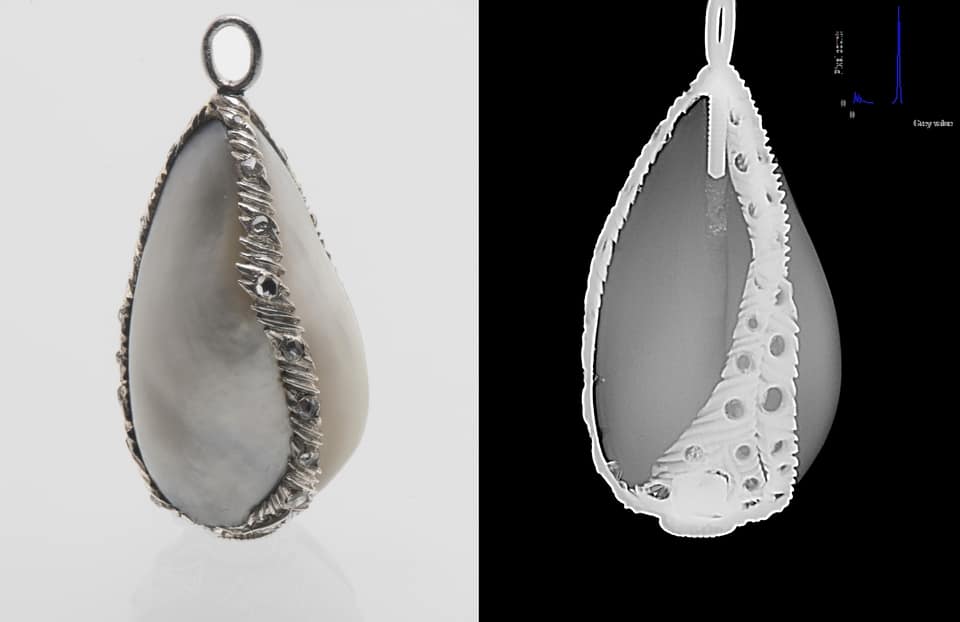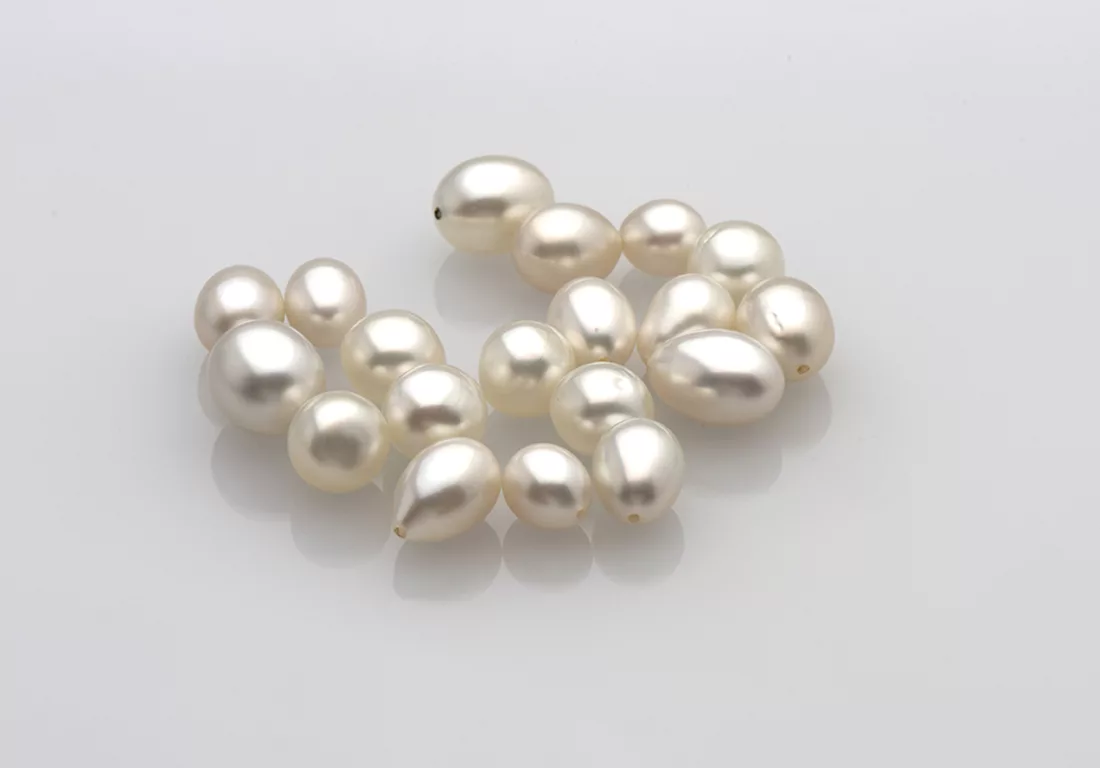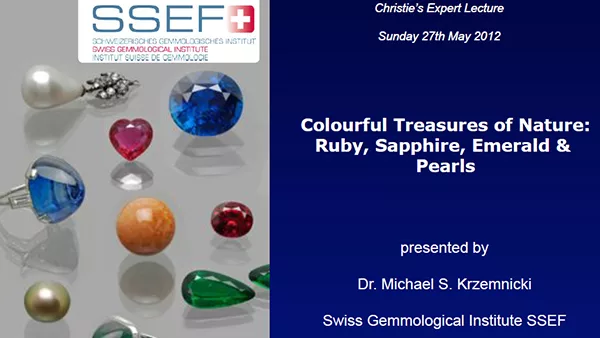
Assembled blisters and shells used to imitate pearls
by Dr. M.S. Krzemnicki, first published in Facette 28 (May 2023)

The second item is a Belle Époque pearl and diamond necklace (Figure 2) by Boucheron. Originally designed as a tiara in 1896, it was shortly afterwards transformed by Boucheron into a necklace and matching ear-pendants (1902). The 32 saltwater natural pearls in this jewellery have been carefully selected and exhibit beautifully matching button- to drop-shapes and a very ne pearl lustre. Their attractive colour subtly ranges from white to light cream. In addition to these qualities, part of these pearls show rosé and green overtones, poetically also referred to as the “orient of pearls”. These overtones are an iridescence effect visible on the surface of pearls and contribute greatly to the beauty of the described pearls.


The last item to be described here is the Fürstenberg pearl tiara. This tiara is set with 23 saltwater natural pearls of partly remarkable size in a historic design of the late 19th century. Based on the provided documentation, this pearl tiara was part of the jewels of Fürstenberg, a noble family from Southwestern Germany, hence its name. The pearls in this tiara are characterised by a beautifully matching drop shape and a ne pearl lustre. Their colour subtly ranges from white to light cream. The combination of well-balanced trace elements found in these natural pearls are characteristic of saltwater pearls.
The X-ray analyses of pearls in jewellery is often quite challenging for the analysts at the SSEF. This is especially the case when they are set in a rather rigid tiara with lots of metal mounting and diamonds. We were thus fortunate to have been able to analyse these pearls from the Fürstenberg tiara in a first round when they were detached from the main tiara setting. A selection of these radiographies is shown in Figure 4, revealing characteristic “onion-like” ring structures in these natural pearls. In addition, these radiographies show also different drilling situations, from being half-drilled to fully drilled.

The second item we received recently at SSEF was even more fascinating (Figure 3). This pendant was rather large with a maximal length of about 36.50 mm, containing as it seemed a large pearl of slightly baroque drop shape and kept in an “cage” of three metallic branches set with small old-cut diamonds. Originally thought to be a hollow pearl, also known as “soufflure” which sometimes are of exceptional size, it became quickly evident that this object had actually been assembled from three curved shell pieces to imitate a large natural pearl. From the distinct wear marks on the shell pieces, a rather old age might be possible. However, whether this item was truly historic, or made in an antique design with old shell pieces could not be established based on our testing.
Although disappointed by the fact that this item was not a natural pearl, the client was still happy to receive back the full information about this elaborately created objet d’art.
Want to learn more about pearls?

Start your journey to becoming an pearl expert with our free online course “Introduction to pearls”.
Learn all about pearls. Their fascinating history, how they form, where they come from. Learn about all the different origins of pearls and their treatments. Take this course as an introduction to the wonderful world of pearls.


